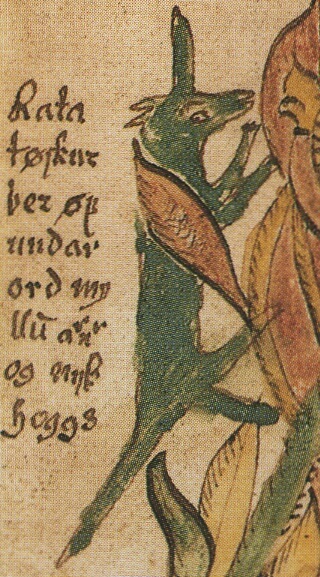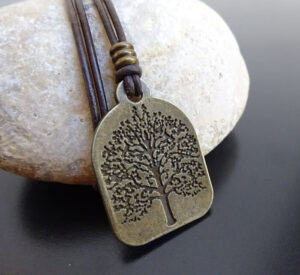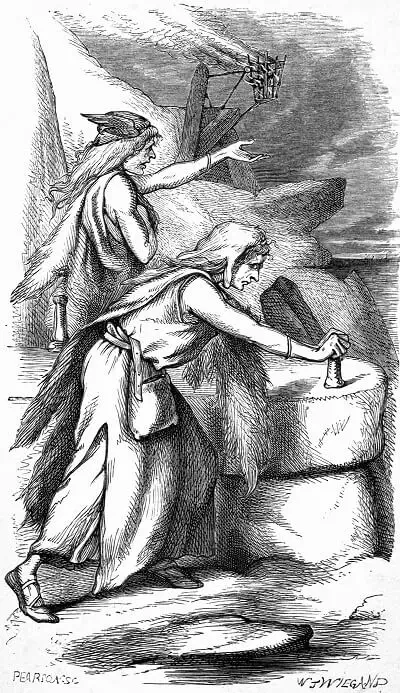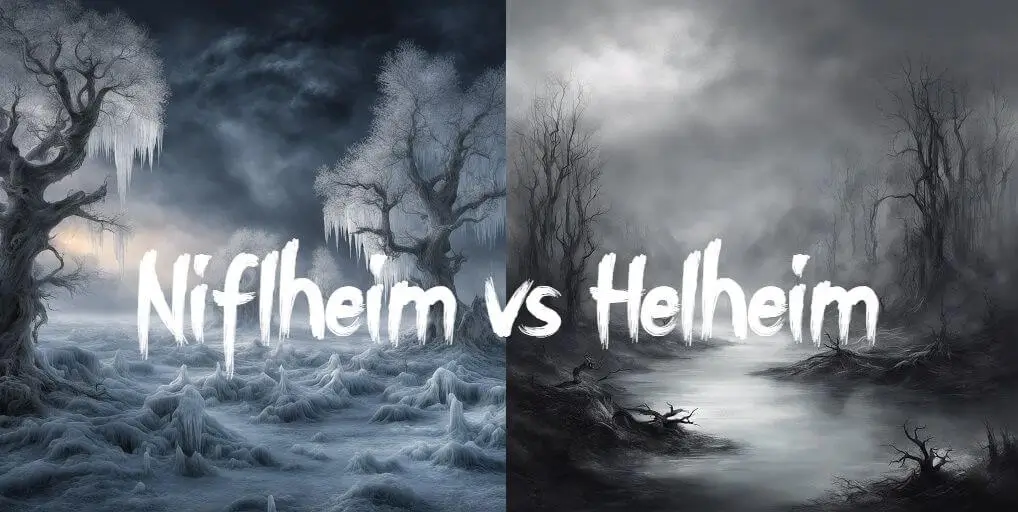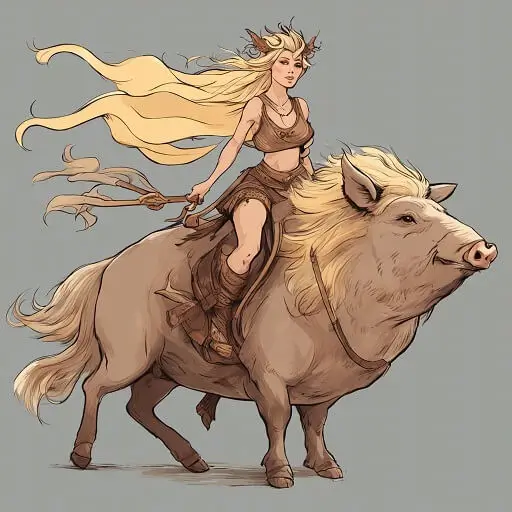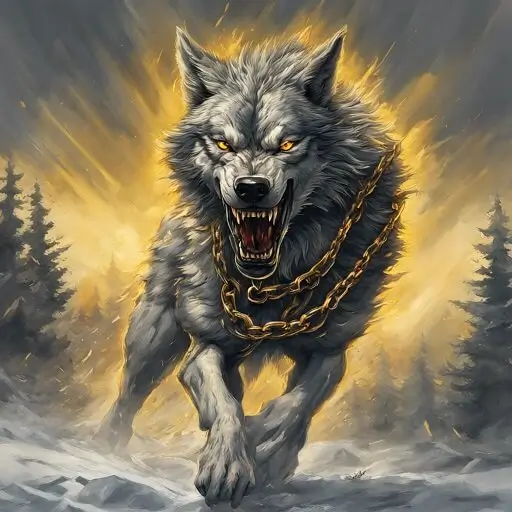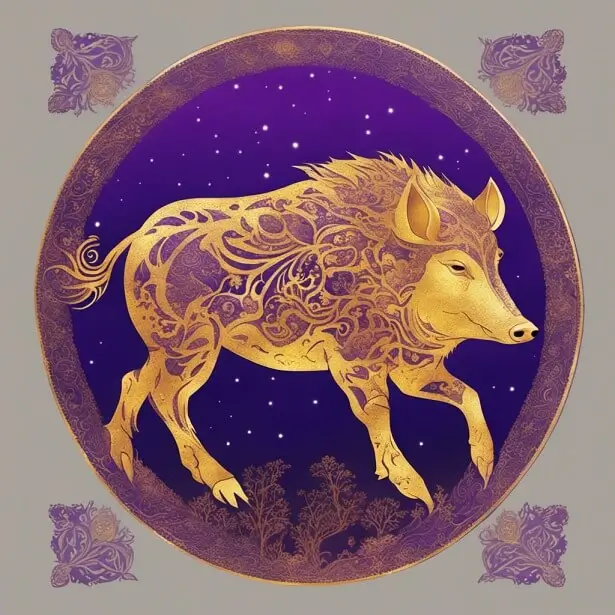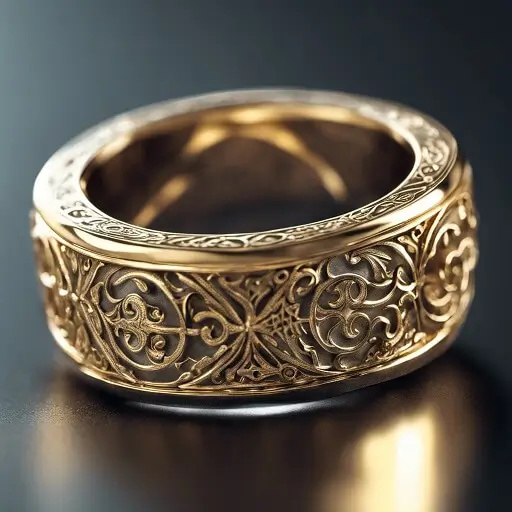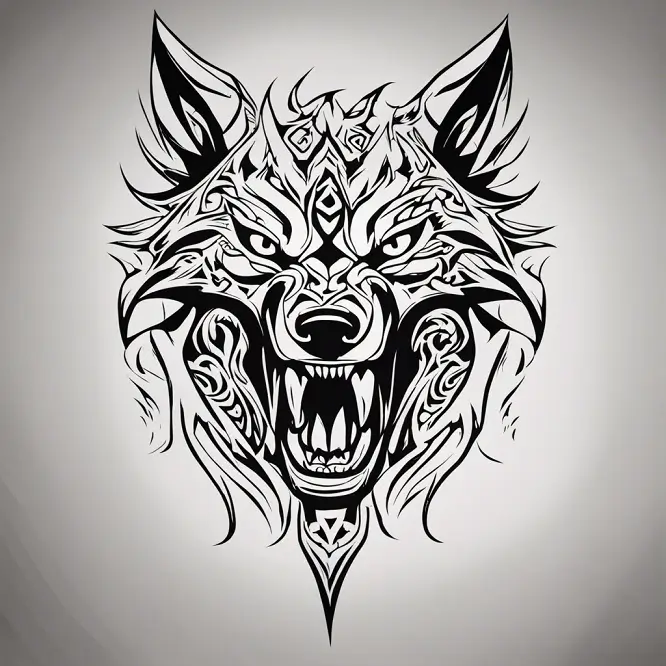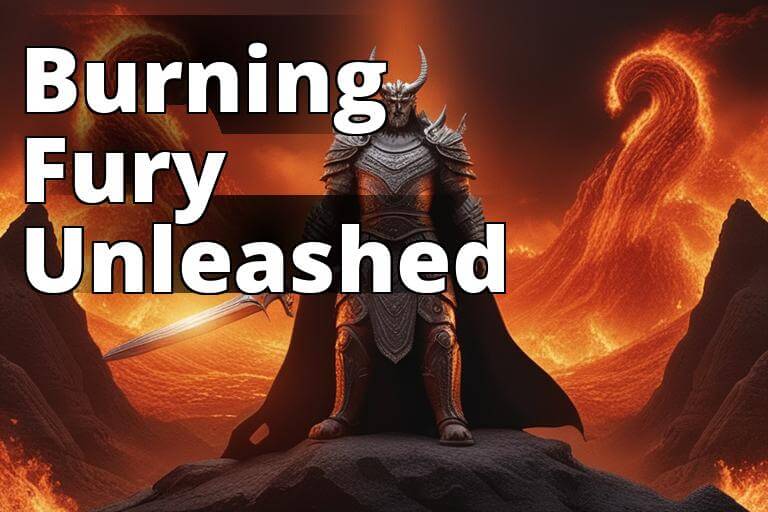Ratatoskr, a squirrel who serves as a messenger in Norse mythology, is known for being cunning and mischievous as he runs up and down the world tree Yggdrasil carrying insulting messages between the wise eagle perched at the top and the serpent-like dragon gnawing at the roots.
This tricky rodent plays an interesting role in these ancient myths, sowing discord through his snarky remarks. Let’s take a closer look at Ratatoskr and his significance.
Key Points:
- Ratatoskr is a squirrel in Norse mythology who carries insults between an eagle above and a dragon below Yggdrasil.
- He scurries up and down the world tree sowing chaos through his gossip and slander.
- Ratatoskr represents the harms of malicious speech and spreading animosity through petty disputes.
- His name means “drill-tooth” in Old Norse, referring to his piercing insults.
- Ratatoskr originated in Icelandic poems like the Poetic Edda before appearing in later Norse texts.
- He demonstrates the destructive power of unrestrained, hostile speech.
- Ratatoskr shows that adversity and conflict are inevitable parts of life.
- Modern pop culture depicts Ratatoskr as an online troll who fans discord.
- Ratatoskr remains an important trickster figure who imparts lessons about managing disputes.
Who is Ratatoskr the Squirrel in Norse Mythology?
Ratatoskr first appears by name in the Poetic Edda, a 13th century collection of Old Norse poems compiled in Iceland. In the poem Völuspá, a völva (seeress) describes Yggdrasil, the great ash tree that connects the nine worlds in Norse cosmology.
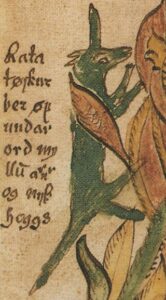
She says that “ratatoskr scurries up and down the trunk of the tree, carrying slanderous gossip between the eagle perched at the top and Níðhöggr the dragon who gnaws at the roots.” This introduces Ratatoskr as a bushy-tailed rodent who ferries insults up and down Yggdrasil.
The name Ratatoskr comes from the Old Norse words for “drill” and “tooth,” possibly referring to this squirrel’s piercing remarks. Snorri Sturluson gives more details about Ratatoskr in his Prose Edda from around 1220 CE.
He says that “an eagle sits at the top of Yggdrasil, and it has knowledge of many things. Between its eyes sits the hawk called Vedrfölnir.
The squirrel called Ratatosk runs up and down the tree. He tells slanderous gossip, provoking the eagle and Níðhöggr.” Here we see Ratatoskr’s primary role is to stir up trouble between the wise eagle above and the dragon below.
Ratatoskr’s Role on Yggdrasil, the Tree of Life
In Norse mythology, Yggdrasil is a massive ash tree that connects the nine realms, its branches and roots stretching out across the cosmos. Many creatures dwell among its boughs and roots, including four stags, a wise eagle, the wyrm Nidhogg who gnaws at its roots, and of course, the troublesome squirrel Ratatoskr.
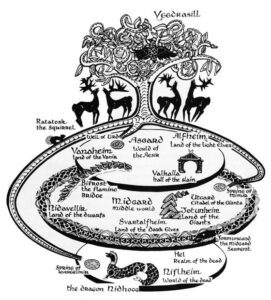
Ratatoskr spends his days scurrying up and down Yggdrasil, from the lofty perch where the unnamed eagle keeps watch, down to the roots where Nidhogg chews hungrily.
Some versions specifically describe Ratatoskr as a red squirrel with a bushy tail. As he climbs the trunk, Ratatoskr shouts insults told to him by one creature, provoking the other. His incessant chattering fuels the animosity between the two and sows chaos at all levels of the world tree.
In this way, cunning Ratatoskr symbolizes the discord that can spread through slanderous gossip. The squirrel traffics in petty grievances rather than fostering wisdom. Some scholars see Ratatoskr as representing destructive speech, as his hurtful words keep conflicts burning. Through this mischievous rodent, the myths show the harm that can come from harsh language and unchecked quarrels.
Ratatoskr’s ceaseless scurrying up and down Yggdrasil exemplifies the potential for mischief and bitterness to spread unchecked. As he carries mean-spirited messages between the eagle and dragon, the squirrel fuels vitriol that could otherwise burn out if left alone. But Ratatoskr’s incessant gossip provides a constant spark, ensuring flames of animosity stay lit.
With his bushy tail twitching behind him, Ratatoskr darting up and down the tree makes for an amusing image. But his larger role as a spreader of slander points to the damage malicious rumors and petty provocations can inflict. Unrestrained speech both spreads and escalates conflict, preventing peaceful resolutions.
Through including this chattering rodent as a key figure on the Norse Tree of Life, the myths impart important lessons about the power of words. Ratatoskr’s gossip demonstrates how quickly bitterness can contaminate communities once unleashed. His stories spread like a virus infecting the whole world tree.
At the same time, the very existence of Ratatoskr signals that adversity and strife are inevitable in life. His provocative role highlights that discord goes hand-in-hand with harmony and wisdom. By weaving this troublemaker into tales of Yggdrasil, Norse myths acknowledged that chaos and order perpetually cycle through the cosmos.
The Possible Origins and Meanings of Ratatoskr
As a troublemaking squirrel running up and down Yggdrasil, Ratatoskr seems to represent the potential for mischief, bitterness, and strife in the world. Given the scarcity of surviving sources about Norse myths, the origins of Ratatoskr remain speculative. Some scholars suggest Ratatoskr was inspired by Scandinavian folklore about squirrels being talkative, excitable creatures.
His provocative role may also relate to older fertility myths and sexual symbolism. The squirrel’s movement up and down the tree echoes ancient metaphors depicting the cosmos as the union of masculine and feminine elements reaching skyward and earthward. Ratatoskr’s constant scurrying blurs gender lines, incorporating masculine aggression and feminine chaos.
Ratatoskr’s name referencing a drill-tooth highlights his destructive potential through harsh speech. In a broader sense, the squirrel symbolizes unrestrained impulses and the adversarial relationships that can arise through petty disputes.
By detailing Ratatoskr’s actions, the myths impart lessons about managing conflict and guarding against malice. The rodent stirs up trouble by carrying petty insults back and forth rather than encouraging understanding. In this way, Ratatoskr symbolizes communication gone awry.
Through including this chattering rodent as a key figure on the Norse Tree of Life, the myths impart important lessons about the power of words. Ratatoskr’s gossip demonstrates how quickly bitterness can contaminate communities once unleashed. His stories spread like a virus infecting the whole world tree.
At the same time, the very existence of Ratatoskr signals that adversity and strife are inevitable in life. His provocative role highlights that discord goes hand-in-hand with harmony and wisdom. By weaving this troublemaker into tales of Yggdrasil, Norse myths acknowledged that chaos and order perpetually cycle through the cosmos.
Ratatoskr in Popular Culture and Entertainment
The mischievous squirrel god Ratatoskr from Norse mythology has become a popular figure in contemporary books, games, and media. With his reputation as a messenger who fans the flames of discord on the world tree Yggdrasil, Ratatoskr often plays similar troublemaking roles when adapted to modern stories.
In fantasy novels, Ratatoskr sometimes aids questing heroes as a guide, or hinders them through trickery, staying true to his impish nature. He makes brief cameo appearances in many fictional works about Norse mythology, showing that his name remains widely familiar centuries later.
Certain video games cast Ratatoskr as either a helpful ally who provides restoration items, or as a boss enemy blocking the hero’s progression. In some games, he takes on a complex central role managing the distribution of resources throughout the world.
Ratatoskr’s talent for spreading gossip and stirring up bitterness between the mythological creatures of Yggdrasil translates well to contemporary mediums like online forums or social networks.
Some comic books portray Ratatoskr as an internet troll who fans the flames of discord through inflammatory online posts. Other comics feature him sowing chaos in Asgard itself.
With his constant foraging and chattering, Ratatoskr makes a natural fit for lighthearted children’s stories featuring talking animals. But adult-oriented comics can also utilize his penchant for vicious rumors to more sinister effect.
No matter the genre, creators tend to highlight Ratatoskr’s playful mischief and impish delight in making trouble. Whether as a hero or villain, this busy squirrel continues to captivate audiences centuries after his earliest appearances in Old Norse myths and poetry. The enduring appeal of Ratatoskr shows that this messenger of mayhem still has messages for the modern world.
Frequently Asked Questions
Who is Ratatoskr in Norse mythology?
Ratatoskr is a squirrel who runs up and down Yggdrasil, the Norse world tree, carrying insults and provocative messages between the eagle above and Níðhöggr the dragon below. This mischief fuels conflict between the two creatures who might otherwise co-exist peacefully.
Why is Ratatoskr significant in Norse myths?
As a messenger spreading slander, Ratatoskr represents the harms of unrestrained speech and escalating animosity. His actions symbolize the chaos sown through malicious gossip and petty disputes spiraling out of control.
Where does Ratatoskr appear in Norse texts?
Ratatoskr is mentioned in the Poetic Edda poem Völuspá and described in Snorri Sturluson’s Prose Edda as a gossiping squirrel stirring up trouble on Yggdrasil.
What kind of creature is Ratatoskr?
Ratatoskr is generally depicted as a cunning red squirrel with a bushy tail who nimbly scurries up and down the trunk of Yggdrasil. This emphasizes his chaotic, restless nature.
What is Ratatoskr’s role on Yggdrasil?
Ratatoskr’s main role is carrying petty insults between the eagle at the top of Yggdrasil and the dragon Níðhöggr gnawing the roots below, provoking needless conflict between them for his own amusement.
Why does Ratatoskr sow discord?
As a destructive trickster figure, Ratatoskr creates chaos by spreading mean-spirited gossip and escalating tensions between the eagle and dragon through his hurtful words. He fans the flames of their animosity.
How did Ratatoskr get his name?
Ratatoskr’s name in Old Norse means “drill-tooth,” likely referring to his provocative remarks and piercing insults boring malice into the world. It highlights his talent for vicious speech.
Does Ratatoskr appear in modern popular culture?
Yes, Ratatoskr can be found in books, games, comics and other contemporary media drawing from Norse mythology. He is often depicted as a mischievous online troll who spreads dangerous rumors.
Shop Norse Jewelry
Are passionate about Norse Mythology?
Finding the ideal piece of Norse Jewelry can be challenging and time-consuming, especially if you lack inspiration or don’t know where to look.
Surflegacy, has you covered. We have a wide range of Handmade Jewelry in various styles, shapes, colors, and materials, to accentuate your Norse spirit and look. Do not hesitate to visit our selection HERE
Whatever you wear, you’ll find the ideal trendy piece to complement your wardrobe. Our jewelry is designed to be worn every day, no matter where you go or what season is. Are you ready to step up your wardrobe game?


